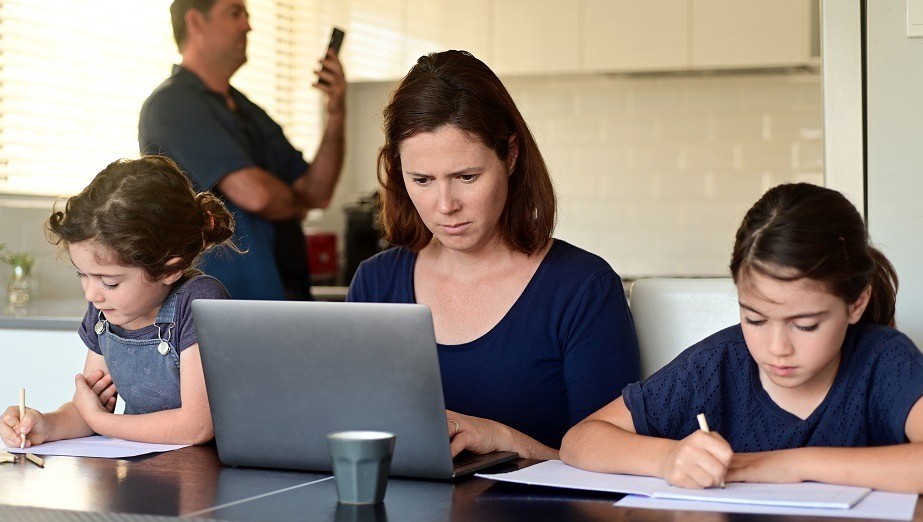
Remote working requires a different workflow to how you might work in a traditional office. And you’re not just transitioning to working from home, you’re doing it under extreme circumstances. For workers who are totally new to this style of work, it can feel like a very large learning curve. For those who already are home workers, there are still new factors to adjust to, for example, you may now have to share your time and space with new 'co-workers' (including children, your partner or fellow flatmates). The people you live with may have different requirements from what you’re accustomed to in your usual working space.
There’s also the general day-to-day running of the household that may now impact on the time you have available to be actually working. And, perhaps on top of all this, you’re needing to adopt an entirely new role as a teacher or carer too. Your demands and responsibilities at home add an extra layer of complexity to how you may now work. Instead of trying to transpose existing work practices directly over to your 'work at home' situation, you need to develop some new rituals and routines that support productivity and wellbeing in this new working environment. Here are three things to consider and implement, to help your new work life run more smoothly, ensure you stay focused and get things done, despite what's going on around you.
What types of work do you need to get done in a day? Break down the different 'deep work' and 'busy work' tasks required as part of your role. Then note how much time you’re spending on each of them, and whether that is time effectively spent. What tools (digital and non) do you need to do the different tasks? Think about whether you have what you need to get your work done efficiently and effectively. With money being tight for most of us right now, consider how you can work in a lean way, that uses the least amount of technical hardware possible, whilst still supporting you to do your best.
How does your workflow need to change to accommodate the additional requirements of being at home with other responsibilities? Perhaps you can’t be online from nine to five. Perhaps due to family commitments, you need to split your day in two, or three, or only work in the mornings. Also consider your natural energy cycles throughout the day, and when the best time might be to do different types of work.
We currently have less time and less energy to do what we need to do at work. So, we need to simplify our processes, prioritise what’s most important... and leave the rest. To help stay focused, try time blocking your activities throughout the day, batching your smaller tasks together into single time slots, and/or doing your deep, difficult or important work first, when you’re likely to have the most energy.
Be realistic about what you can achieve in a day. As we are now required to spend even more time on digital, it’s important to practice healthier digital hygiene habits too, to reduce the amount of distraction. Keep your body and mind healthy. Put your phone away while working and turn off your notifications for chat and email when you need to do deep work activities. Designate specific time for social media when your energy levels are lower, perhaps during lunch or at the end of the day. Create cut off times for work, and take regular breaks away from your screen(s), so that your eyes and brain can rest and recover.
If you’re going to be available all the time online, via email, chat and video, you will never get anything done. Start practising asynchronous communication instead. That means not responding in real time. That means blocking out quiet time for the important work, and then checking in on emails and messaging at set agreed times. Set boundaries and expectations with both your team and your clients in terms of how you are able to work best together from home at this time. As they are most likely in the same boat, they will understand that you are not available at certain times, so establish mutually agreeable ground rules.
Spending an hour on a video call is not the same as having an in-person conversation or a phone call with someone. Protect your energy by choosing the right form of communication for the right task. Think carefully about the reason for, or purpose of, the communication. Is it better to email, chat or have a video call to save everyone’s time, energy and focus? To stay productive in these conditions, we need to simplify how we work as much as possible. This is a very good time to develop more mindful working practices that support your focus in the time that you have. And you may find that the healthier work habits you develop to support your focus, will stand you in good stead if/when you migrate back to your usual office situation.
What is the most important thing that you need to get done today - and how can you do that in the most effective way in your particular situation?  Michelle Bondesio is an independent communications consultant and business performance mentor who champions ‘better selves for better business’. Originally from South Africa, Michelle established Growth Sessions to help business people adopt healthier working cultures. Her talks, workshops and mentoring packages support business teams to build their resilience, unlock their creativity, improve their productivity and boost team morale. She set up her business in Lancashire two years ago after receiving support through Boost’s Growth Support Programme and now reaches a wide network of business clients across the county.
Michelle Bondesio is an independent communications consultant and business performance mentor who champions ‘better selves for better business’. Originally from South Africa, Michelle established Growth Sessions to help business people adopt healthier working cultures. Her talks, workshops and mentoring packages support business teams to build their resilience, unlock their creativity, improve their productivity and boost team morale. She set up her business in Lancashire two years ago after receiving support through Boost’s Growth Support Programme and now reaches a wide network of business clients across the county.







The website uses cookies.
Some are used for statistical purposes and others are set up by third party services. By clicking 'Accept all & close', you accept the use of cookies. For more information on how we use and manage cookies, please read our Cookie Policy.